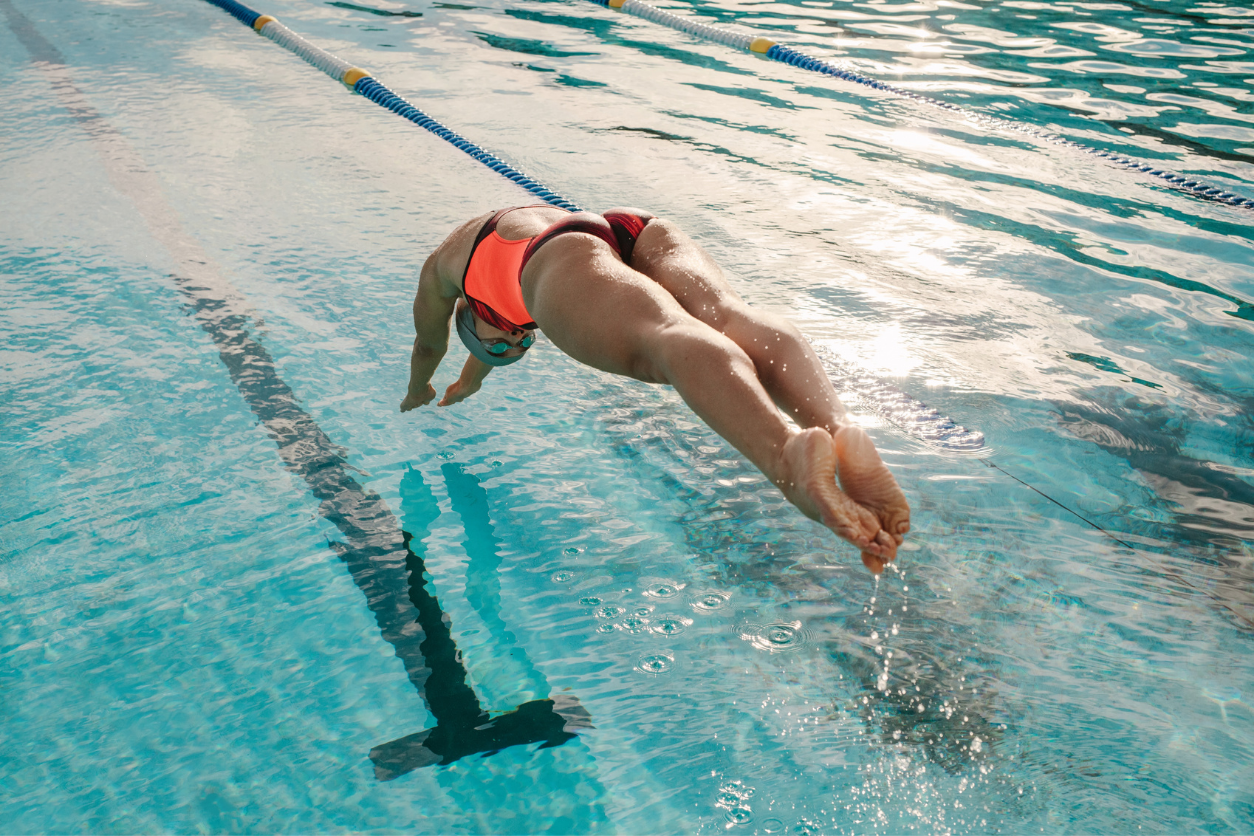What you need to know before you dive into the recruiting process.
When it comes to high-profile college recruiting, women’s swimming doesn’t quite have the media presence of football or basketball. That said, while the end goal is still to earn a scholarship, the recruiting process for women’s swimming is a bit different. So, to help you manage your recruiting process with (hopefully) less stress, we’ve done a deep dive on some of the most commonly asked questions about recruiting and women’s swimming scholarships.
When Should I Begin My Recruiting Process?
If you’re a freshman or sophomore, you can start researching schools and reaching out to college swim coaches any time, though NCAA rules say they can’t contact you until after your sophomore year. Many coaches say they’ll start noticing potential swim recruits as early as their sophomore year so, if you’re not noting any interest from college coaches, work hard to get on their recruiting radars. Attend camps to be seen by more coaches and raise your profile. Have an online profile with your experience, personal record times as well as a highlight video. Don’t be shy about reaching out to coaches at your target schools. You can even ask your coach for help with an introduction or to reach out to a coach or school on your behalf. The sooner you begin your recruiting process, the better.
What Do I Need To Do To Earn A Scholarship?
The best way to earn a college scholarship is to plan the path that’s right for you. Every athlete is different and your recruiting process will be unique compared to anyone else. That’s because every swimmer has different strengths and every swimmer can make a different contribution to a collegiate swim team. So, to plan your path toward a college scholarship, start by assessing your talents as a swimmer and find programs where your attributes can contribute to making a team successful.
To land a women’s college swimming scholarship, you need to keep working on your technique in the pool, reach out to college coaches at the schools where you think you’ll fit best, and make sure your scores in the classroom will stand out just as much as your times in the pool. And don’t forget that good grades in high school will show you can handle the academic load in college and it may even make you eligible for academic scholarships as well. And that can make you an even more attractive swimming recruit to a college coach.
How Likely Am I To Earn A Scholarship?
When you consider there are almost 195,000 female high school swimmers in the U.S. but only 195 NCAA DivisionI women’s swim programs totaling 5,781 team members, the numbers can be discouraging. On those 195 women’s swimming programs, the average roster size is 30 athletes, but each team has only 14 scholarships to award.
The upside is, as an equivalency sport, swimming coaches can divide those 14 scholarships in the form of partial scholarships to any combination of student-athletes, so long as the total scholarships awarded don’t exceed 14. So if you crunch the numbers, only the top 2.8% of female high school swimmers will make an NCAA DI team and, if you’re among those elite swimmers, your odds of earning a scholarship are good, though it may not be a full ride.
If you’re not among those top-end swimmers on Division I programs, don’t get discouraged as there are still plenty of scholarships to be had at other levels. There are 104 women’s swim teams in Division II, each with an average roster of 20 athletes and 8.1 scholarships to award. In the NAIA, 44 schools offer women’s swimming programs with eight scholarships available which can be divided among an average roster of 12 swimmers. Finally, while there are only 13 women’s swim teams at the junior college level, each carries an average of 10 swimmers but each team also has 15 scholarships to award.
What About NCAA Division III?
Though there are 271 women’s swim teams in NCAA Division III, you may have noticed DIII schools weren’t mentioned in regard to the possibility of earning a scholarship in swimming. That’s because DIII schools don’t offer athletic scholarships. However, what DIII schools do offer is plenty of academic scholarship money. In fact, if your academic record is strong enough, you may earn more academic scholarship money at a DIII school than you would via a partial athletic scholarship elsewhere. Plus, there are 271 women’s swimming programs in Division III (compared to 299 in DI and DII combined), each with an average roster size of 20 athletes. So, if you factor DIII into the equation, your talent as a swimmer combined with your good grades can basically double your chances of earning a scholarship to swim in college.
Did you enjoy the article ‘A Deep Dive On Women’s College Swimming Scholarships’? If so, check out more of our articles HERE.




